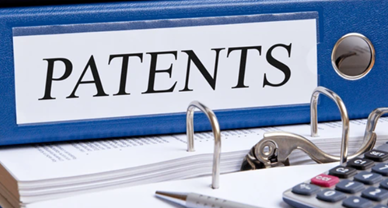Public-Private Partnerships: Examining the Impact of Publicly Funded Research on Pharmaceutical Patents
INTRODUCTION
To identify the role of public funded research in the pharmaceutical industry one has to first determine the problems faced by the public in accessing these inventions and the level of patenting activities in the public funded research institutions in the pharmaceutical sector. The literature shows that major discoveries in the pharmaceutical field that provided a treatment method for many diseases originated in the public funded institutions. These drugs were commercialised to the private industries for its exploitation. However, the private industries charged insanely huge amounts of price for these drugs which were made using the taxpayers’ money making them unaffordable to the larger public. Another area of concern is the problem of follow-on patents and evergreen patenting by private industries from public funded patents or licences. Literature shows that often private industries have two or more follow-on patents on drugs created using public funded research results without any significant innovation citing new formulation of new indications.[i] However, there is currently a scarcity of exact empirical data on how much of the pharmaceutical patents are owned by public funded institutions. However, there have been some attempts all over the world to quantify the data on pharmaceutical patents held by public funded research institutions, yet the bulk of this data is concentrated in the US and hence this article only looks into the US experience. According to a UN Report, most drugs currently in the market in Europe, North America, and Japan, have been made in public funded research institutions, which further licence these drugs to the industries for its commercial exploitation.[ii] In another study, it was found that around 70% of new drugs with therapeutic advances in the US were created using public funds. It was further found that, the funding from the National Institutes of Health (NIH) have played the major role in the creation and to the overall growth of the private sector pharmaceutical industries in the US, by licensing or assigning patented products created using their funds to the industries. Basic research that led to major drug discoveries for diseases like tuberculosis. other infectious diseases, and cancer was mostly public funded. The public funded research in the genome area has also given rise to the development of many drugs.

NOVARTIS CASE STUDY
The pharmaceutical giant Novartis was the major player that mostly made use of the patented public funded inventions. For instance, Novartis used several patents and licences from public funded research to develop the revolutionary drug, Gleevec for the treatment of chronic myelogenous leukaemia, which was then marketed at huge prices. Recent insights also indicate that one of the world’s most costly drug, Zolegensma used for the treatment of Spinal Muscular Atrophy in young children under two years have been created using patents from University of Pennsylvania and Nationwide Children’s Hospital.[iii] Further, several charities both in Europe and US alike have contributed to the development of these drugs.[iv] Additionally, most of the preclinical trials that led to the FDA approval of the drug, Zolgensma, were also done in Nationwide Children’s Hospital and the Ohio State. University College of Medicine.It is appalling to note that a drug developed substantially using public funds and charity is priced at $2.1 million per dose, a price even the billionaires may not be able to afford.[v] Another area where private industries are reaping profits at the expense of public health are from the drugs and treatments for HIV/AIDS people killing diseases. Studies show that, most of the treatment methods for HIV/AIDS have also been discovered in the public funded institutions. In one study, it was found that the universities owned major patents on over one fourth of the HIV/AIDS drugs approved since 1988.The treatment using ‘Antiretroviral’ for HIV/AIDS, was also done in a public funded research university. One major drug ‘Stavudine’ created in Yale University was sold at such high prices that several criticisms and protests arose for charging such high prices for a public funded drug for the most cataclysmic disease in the developing world, especially in South Africa. As a consequence the Yale university intervened and stressed the licences of the patent, BristolMyers Squibb, to not to enforce the patent in South Africa. It was revealed that this involvement by the University led to a “30-fold reduction in the drug’s price and a dramatic expansion of HIV treatment programs in South Africa.”[vi]
LEGISLATIVE AND POLICY FRAMEWORK FOR ENSURING ACCESS TO PUBLIC FUNDED PHARMACEUTICAL INVENTIONS
While the Bayh-Dole Act was passed in the US to facilitate the patenting and licensing of public funded inventions, it also had several provisions to ensure that the public had access to such inventions. First, the Act requires any potential licensee to provide a plan for the development or marketing of the invention and the institutions have to make sure that the plans and abilities of the potential licensee can actually promote the utilization of the invention by the public. Further, even though the Act provides for both exclusive or nonexclusive license, it stipulates that exclusive licences may only be provided under the Act, if the public utilization of any invention could not be achieved or achieved expeditiously by non-exclusive licenses or if exclusive licensing is the only way to recoup the high risk investments that has to made to bring the invention to practical application or otherwise promote the invention’s utilization by the public. The Act further calls for a preference to the US industries; i.e. exclusive licenses can only be given if the licensee agrees that the invention shall be manufactured substantially in the US.[vii] Also, while granting exclusive or partially exclusive licenses, public notice has to be given about the same and opportunity to file objections must be provided. Such a provision is incorporated to make sure that the interests of the Federal Government and the public will best be served by the proposed license. Further, the institution shall not grant an exclusive license, if the grant of such license will substantially tend to lessen competition or result in undue concentration or results in any other situations inconsistent with the antitrust laws. Further the act states that in granting a license to use the invention, the University also generally must give priority to small businesses, if they are equally capable of bringing the invention to practical application like other firms which are not small business firms.[viii]
Author:– Vikram Choudhary, in case of any queries please contact/write back to us at support@ipandlegalfilings.com or IP & Legal Filing.
REFERENCES
[i] David C. Mowery and Bhaven N. Sampat, “The Bayh-Dole Act of 1980 And University–Industry Technology Transfer: A Model for Other OECD Governments?” 30 The Journal of Technology Transfer 122 (2004).
[ii] Lisa Larrimore Ouellette, “How Many Patents does it take to make a Drug-Follow-On Pharmaceutical Patents and University Licensing” 17 Mich. Telecomm. & Tech. L. Rev. 299 (2010); Hemphill, C. S., & Sampat, B. N., “Evergreening, Patent Challenges and Effective Market Life in Pharmaceuticals” 31 Journal of Health Economics 331 (2012).
[iii] Press Release of Nationwide Children’s Hospital, October 18, 2013, available at: https://www.nationwidechildrens.org/newsroom/news-releases/2013/10/avexis-biolife-licenses-spinal-muscularatrophy-sma-patent-portfolio-from-nationwide-childrens (last visited on May 26, 2024) AveXis was later bought by Novartis.
[iv] Press Release of Sophia’s Cure Foundation, September 8, 2010, available at: http://www.sophiascure.org/sma-research/spinal-muscular-atrophy-research-team-receives-pepsi-refreshfunds-from-sophias-cure-foundation (last visited on May 26, 2024).
[v] Dave A. Chokshi, “Improving Access to Medicines in Poor Countries: The Role of Universities”, 3(6) PLoS Medicine 136 (2006).
[vi] Press Release Nationwide Children’s Hospital, May 24, 2019, available at: https://www.nationwidechildrens.org/newsroom/news-releases/2019/05/zolgensma-fda-approval (last visited on May 26, 2024).
[vii] United States Code, Title 35, $204.
[viii] Peter S. Arno and Michael H. Davis, “Why Don’t We Enforce Existing Drug Price Controls – The Unrecognized and Unenforced Reasonable Pricing Requirements Imposed upon Patents Deriving in Whole or in Part from Federally Funded Research”, 75(3) Tulane Law Review 631 (2000).


